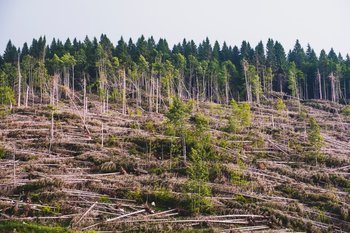
The soil will remain in place for most of its life. However, there will always be a high risk of erosion on the banks and steep hills. It is essential to devote as much effort as possible to actions that will prevent soil from being washed away by runoff. If the soil has left the ground, this area will eventually erode, affecting the water supply and bringing in a lot of pollutants.
It would take decades to restore the original layer of soil on the ground that has been affected, so it is very important to understand how the soil can remain in its place. Fortunately, there are many methods to prevent erosion on steep slopes, and we have prepared some of the best tips for you.
Bare soils can be easily swept away by wind or water, two of the main causes of erosion. By adding plants, their roots will hold the soil in place while their leaves will block rain and prevent the soil from disintegrating. Lawns, ornamental turf and shrubs are the best ways to prevent erosion because they cover the soil at depth.
If you notice bare soil, try to plant bushes or other plants as soon as possible to limit the erosion process.
By placing rocks, you make the soil heavier and prevent young plants and seeds under the ground from deteriorating. This process will slow down the absorption of water to lower the amount of water in the field. Another great way to slow the process is to use bark chips or mow the grass.
If you have nothing to plant, try to keep the soil covered with mulch. Mulch can keep the soil warm, or you can place it around plants to add an extra layer of protection.
By planting something in the soil, you won't need the rocks or mulch because the roots of the plant will hold the soil together.
Another excellent way to control erosion on steep slopes is to use the series of rolled logs made of fibrous materials. Water flowing along the slope will slow down when it hits the logs, and it will infiltrate the ground instead of infiltrating the mud on the slope. The best way is to place the logs on the other side of the hill at a distance of 5 to 10 meters from each other. You can secure the logs in place with strong live plants or wooden stakes.
You can also plant the seeds in the logs, which will also protect them during their growth.
If you decide to plant the seeds in the logs, you should use the stakes to keep the logs firm in one place long enough until the seeds develop their roots that will be planted in the soil.

Compost control blankets are similar to mulch products; the difference is that they provide biological nutrients that promote vegetation growth, even in areas where moisture control and germination may be difficult.
Hills that are severely eroded will eventually collapse downward until they are stabilized. By building the absorbent wall at the base of the slope, the ground is stopped, and the fall process is slowed down. This procedure will give the plants and grass enough time to grow and maintain the soil together.
The wall can be built with rocks, concrete blocks and wood; if you decide to build it with wood, make sure you get the one that has been treated with a preservative to prevent its decay.
You can also use the absorbent wall around the flower beds.
Depending on the country you live in, you may need government approval for this project.
The planet loses 1% of the topsoil per year. While it may seem that the problem will only affect farmers or people who work their land a lot, over time, erosion could affect everyone, especially if you are a lawn or garden enthusiast.